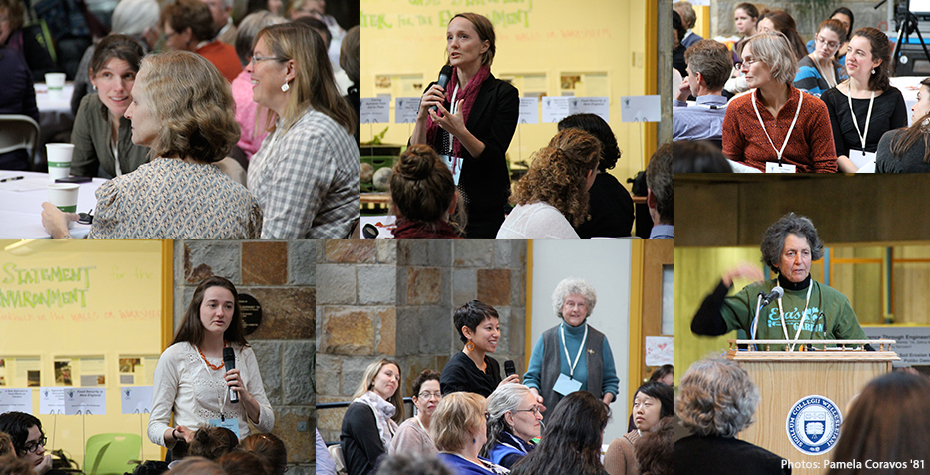Wellesley Students, Faculty, Staff, and Alumnae of All Ages Gather for Learning and Sharing on How to Make a Positive Environmental Impact

More than 100 members of the Wellesley community gathered on Saturday, November 9, to build momentum on maximizing positive environmental impact with a focus on environmentally sustainable food and agriculture.
While a carbon “footprint” is a measure of negative environmental impact, the concept of a carbon “handprint” encompasses the positive impact individuals and communities can have on the environment. Beyond improving the efficiency of existing practices, the handprint idea promotes innovation and the reimagining of the relationships between humans and the rest of nature, as the Project Handprint website explains. The Center for the Environment hosted the symposium, which drew a large crowd to the Science Center, including more than 50 enthusiastic alumnae.
The symposium opened with a talk about the study of food and agriculture at Wellesley, and an introduction to the many “handprinters” at the event. After this, attendees chose from a variety of short talks, roundtable discussions, poster presentations, and even special snack tables to learn about the possibilities of a positive environmental impact on campus and beyond. They reconvened for a harvest dinner, prepared by award-winning “eco-chef” Didi Emmons.
“One of my favorite parts was seeing the many deep conversations happening among students, young alumnae, well-established alumnae, faculty, and staff,” said Kristina Jones, director of the Wellesley Botanical Gardens and adjunct assistant professor of biology, who coordinated the afternoon’s events.
Among the faculty involved were Associate Professor of Environmental Studies Jay Turner and Associate Professor of Geosciences Dan Brabander, who spoke and led discussions. Staff members Jess Hunter, Gail Kahn, Eileen Sprague, and others partnered with Jones to pull off the symposium. Alumna Pamela Coravos ’81 provided major support, from developing the program to photography. Other alumnae who spoke or contributed to planning included Sue Bridge '60, Carly Gayle '13, Rachel Greenberger '00, Mia Howard '12, Louisa Kasdon '73, Betsy Knapp '64, Hoi-Fei Mok '10, Dorrie Pizzella '80, Phoebe Poole '08, and Eva Sommaripa '63. Current students Sophia Garcia ’15, Mackenzie Klema ’14, Sophia Liu ’14, and Rosalie Sharp ’16 spearheaded student participation, and assisted chef Didi Emmons with preparing and serving the harvest dinner. Student groups Regeneration, Slow Food, Mezcla, German Club, European Club, Italian Society, Russian Club, and Maison Francaise provided food for “International Street Food” portion of the event.
“One of our goals was to leave people wanting more, and I heard from many participants that the event was too short!” said Jones. “We're already starting the planning for a one- or two-day symposium for next fall, with some smaller events in between.”
Through future events with the Project Handprint initiative and others, Jones and her colleagues in the Center for the Environment will continue to train a diverse group of women for global leadership through bringing the full strength of the liberal arts to bear on environmental challenges.
